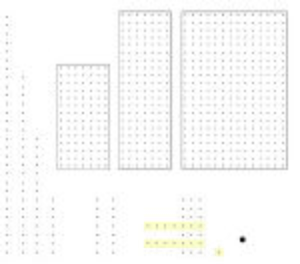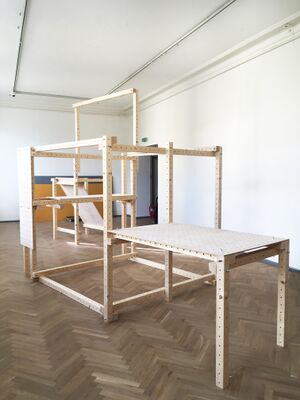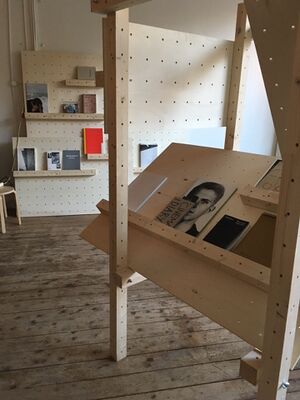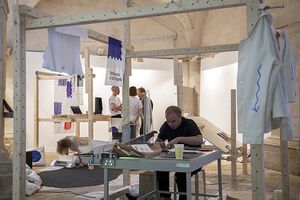Display(ing)
The display reflects a system of thoughts: what is to be organized, exposed, published, distributed, shared? Why, how, and for whom?
The display is also itself a publishing device, connecting interdisciplinary research practices across contexts, internal processes, and outputs. It is a medium of its own, a tool for thinking critically about the links between graphic design research, spatial publishing, and its various potential publics.
The panels, the beams, their holes, the nuts and bolts that thread through the holes to bring the structure together. All the essential components of a more conventional publishing medium are there. Like a book, the panels work like blank pages; by arranging the panels, the beams, their holes, the nuts and bolts, a spatial layout takes shape.
The fanfare display can be approached concretely as furniture (chairs, desks, shelves, hangers, stage) or constructed into spatial elements as cubes, walls, or walking directions. When constructed in the public, on fairs, or in institutions, the display allows you to claim space, frame content, and publish ideas.
The display combines visual language and material sensibility. The space created is not an empty container in which things happen, but a container and generator of happenings. Its strength comes from this modularity.
The display catalyzes the research, directs the viewer, exposes the process. It shows the structures we use, the language we choose, the behaviors we embody, and the social interactions we engender. It shapes the experience and, ultimately, the end result.
What makes a display? How is the display a publishing tool? How can a display design be collective? How does the display allow us to claim space?
fanfare is a platform that curates, designs and educates by providing a timely and critical reflection on design and visual communication — both online and offline. fanfare encourages awareness of new exploratory approaches on visual imagery and cross-disciplinary design methodology.
The modular fanfare display structure was created by Freja Kir and Lotte van de Hoef in the early days of fanfare (2014) as a response to a lack of a permanent address and a necessity for adaptability in scale and function.



